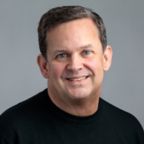National Survey: Privately Insured in America: Opinions on Health Care Costs and Coverage
1 in 8 privately insured adults under age 65—more than 16 million people—face major financial hardship as a result of medical bills.
Chicago, October 13, 2014—The Associated Press-NORC Center for Public Affairs Research has released the results of a major new survey providing an in-depth look at the ways in which Americans with private health insurance plans are impacted by health care costs.
The results show that most privately insured Americans between the ages of 18 and 64 are satisfied with their health care plans. They report not being deterred from using their health care benefits because of cost and that the cost of health care does not have a large impact on their finances.
The findings also reveal a significant number of privately insured Americans, particularly those covered by high-deductible health plans, who tell a distinctly different story. These are people expressing concern about the uncertainty of major medical expenses, who skip necessary medical treatment, and for whom the cost of health care is a significant financial burden.
“The survey reveals that a sizable number of Americans who have private health care coverage are satisfied with their plans,” said Trevor Tompson, director of the AP-NORC Center. “But the fact that one in eight of them are finding their medical bills pose a major financial hardship and that a fifth of people who are sick don’t go to the doctor because they are worried about the cost is clearly a cause for concern.”
Analysis of the data reveals that one in eight privately insured Americans—more than 16 million people—face major financial hardships like going without food or using up all of their savings as a result of medical bills.
The nationally representative survey, with funding from the Robert Wood Johnson Foundation, was conducted with 1,004 privately insured adults age 18- 64. The survey includes 267 respondents who report having high deductible health plans (HDHP), a segment that includes about 36 percent of those with private insurance plans, a number that has more than doubled since 2007.
Key findings also include:
- Significant numbers of privately insured individuals don’t go to the doctor when they are sick (19 percent), go without preventive and recommended care (18 percent), use up all or most of their savings (18 percent), and go without basic needs (13 percent).
- A quarter of privately insured adults age 18- 64 lack confidence in their ability to pay for a major unexpected medical expense.
- The privately insured who report having a HDHP are more likely than those who do not to decrease their contributions to savings (41 percent vs. 26 percent) and retirement plans (28 percent vs. 15 percent) as a result of health care costs.
- Nearly 1 in 4 adults age 18- 64 covered by a HDHP reports that paying for health care expenses caused them to use up their savings.
- Most privately insured Americans have experience changing health care plans. After changing plans, 41 percent say their costs went up, but only 18 percent of them think they are getting higher-quality care in exchange for those higher costs.
- With out-of-pocket costs emerging as a major source of uncertainty among the privately insured, more privately insured Americans choose a health care plan with a relatively high monthly premium but lower out-of-pocket costs (52 percent) over a plan with relatively low premiums and higher out-of-pocket costs (40 percent) when presented with the tradeoff.
- But, there isn’t overwhelming support for plans with select networks designed to keep out-of-pocket costs low. Twenty percent say they are extremely or very willing to participate in this type of plan, 38 percent are somewhat willing, and 40 percent are not too or not at all willing.
About the Survey
This nationally representative survey of the 50 states and the District of Columbia was conducted by telephone with 1,004 privately insured adults age 18- 64. The sample included 602 respondents on landlines and 402 respondents on cell phones. Interviews were conducted in both English and Spanish, depending on respondent preference. The overall margin of error is +/- 4.1 percentage points.
About The Associated Press-NORC Center for Public Affairs Research
The AP-NORC Center for Public Affairs Research taps into the power of social science research and the highest-quality journalism to bring key information to people across the nation and throughout the world.
The Associated Press is an independent global news organization dedicated to factual reporting. Founded in 1846, AP today remains the most trusted source of fast, accurate, unbiased news in all formats and the essential provider of the technology and services vital to the news business. More than half the world’s population sees AP journalism every day.
About NORC at the University of Chicago
NORC at the University of Chicago conducts research and analysis that decision-makers trust. As a nonpartisan research organization and a pioneer in measuring and understanding the world, we have studied almost every aspect of the human experience and every major news event for more than eight decades. Today, we partner with government, corporate, and nonprofit clients around the world to provide the objectivity and expertise necessary to inform the critical decisions facing society.
Contact: For more information, please contact Eric Young at NORC at young-eric@norc.org or (703) 217-6814 (cell).
The two organizations have established The AP-NORC Center for Public Affairs Research to conduct, analyze, and distribute social science research in the public interest on newsworthy topics, and to use the power of journalism to tell the stories that research reveals.





